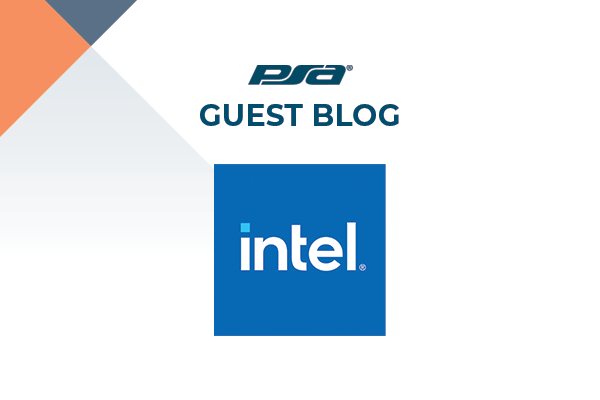
PSA & Intel: Seeing is Believing with Computer Vision
Computer vision (CV) works with artificial intelligence (AI) to train computers to see and interpret images the way humans would. CV applications can trigger automated action based on their interpretation of visual information and generate insights that people can use to improve decisions and actions.
Valuable in multiple environments, CV systems can recognize objects and people quickly, analyze audience demographics, inspect manufactured products, help improve workflows and more.
Demand for CV is heating up. Research firm OMDIA expects nearly two-thirds (64 percent) of all network cameras shipped by 2025 to be AI-enabled. By then, the company predicts that the total worldwide market for video analytics will reach $32 billion. In addition, Gartner estimates that by 2023, 65 percent of enterprise-captured images and videos will be analyzed by machines rather than humans.
Video analytics promises to drive smart automation and enable intelligent, data-driven decision making and actions in a nearly limitless number of situations. As with more traditional data analytics, these capabilities translate into improved operational processes, business insights, experiences and human health and safety across multiple environments. Here are some examples of how CV technology can be applied for the betterment of business and society:
Smart cities and governments can improve public safety and security with automated, real-time transportation, parking and crowd management. They can also improve sustainability programs with smart waste management systems that use CV to help quickly track and sort refuse.Manufacturing floors and other industrial environments can use video analytics for real-time quality control such as identifying defective parts before they’re incorporated into production. These environments can also use CV to determine how to streamline work processes in ways that enable faster operations and greater productivity.Healthcare providers are using CV to optimize the use of medical imaging data and improve the accuracy of radiology readings. They can also streamline operating room procedures for potentially improved surgical outcomes. The hope is that CV solutions will eventually accelerate medical evaluations, diagnoses and treatment to enable the delivery of better patient care and ultimately extend the lives of patients and enhance their life quality.Retailers can enrich in-store experiences and improve merchandising, traffic flows and checkout processes. For example, virtual fitting room mirrors combine CV and augmented reality to assist shoppers with product evaluations within the context of their preferences. CV can also help evaluate the effectiveness of product displays with insights as to more pleasing and efficient store layouts. Robots can wait on customers, make deliveries and alert personnel that shelves need restocking. In the warehouse, CV identifies and resolves anomalies that could interrupt or slow operations. Let’s take a closer look at CV in each of these industries.If there's one thing that is clear when it comes to CV, it's that there are massive opportunities for innovation in every industry. Intel, working alongside PSA, makes CV and video analytics accessible to everyone by enabling a rich ecosystem of partners developing on Intel Architecture. Click here to learn more about basic components and operation of CV systems, additional applications, deployment considerations and how to get started with Intel partners.
